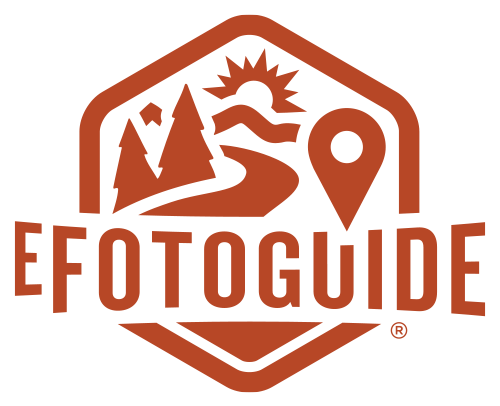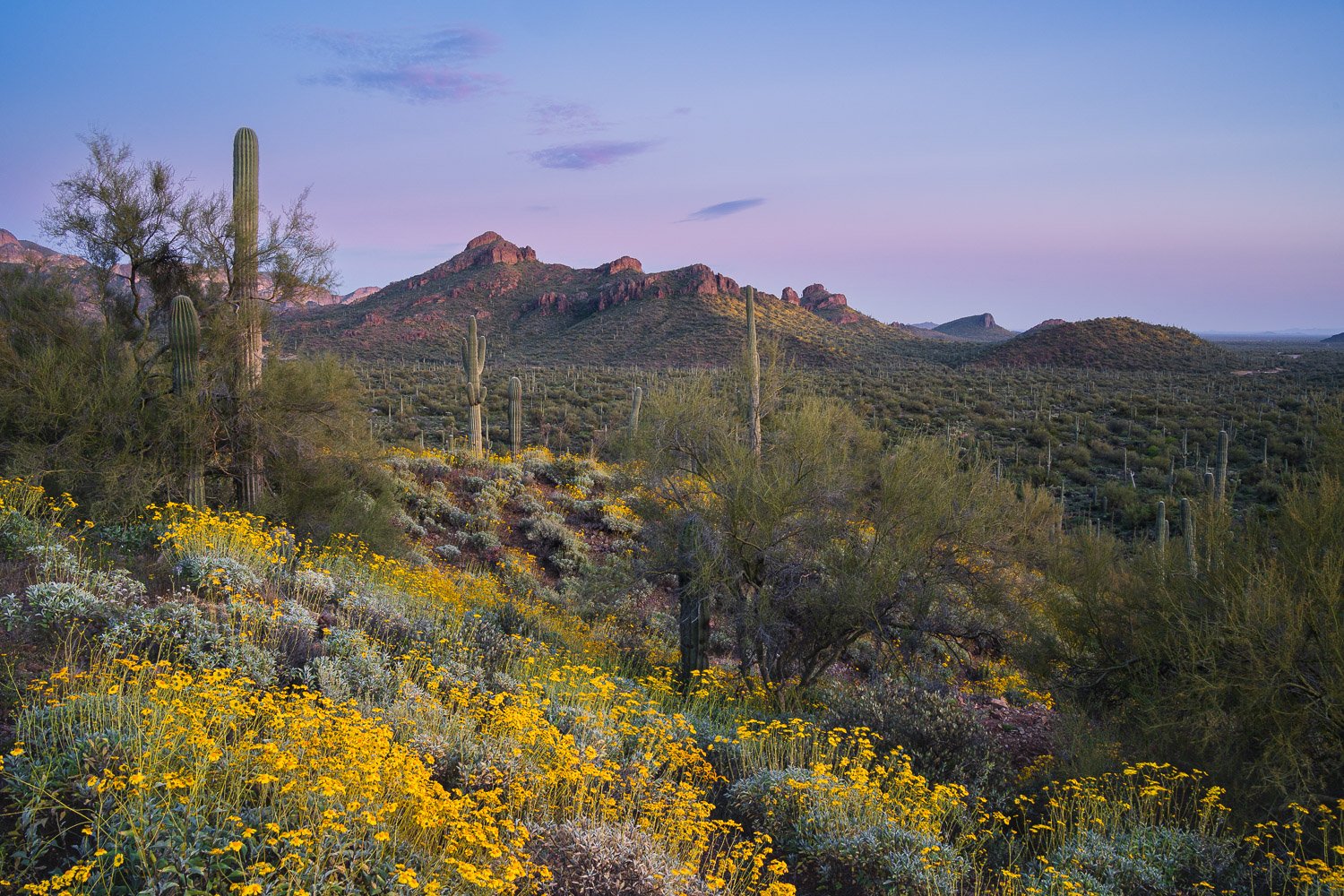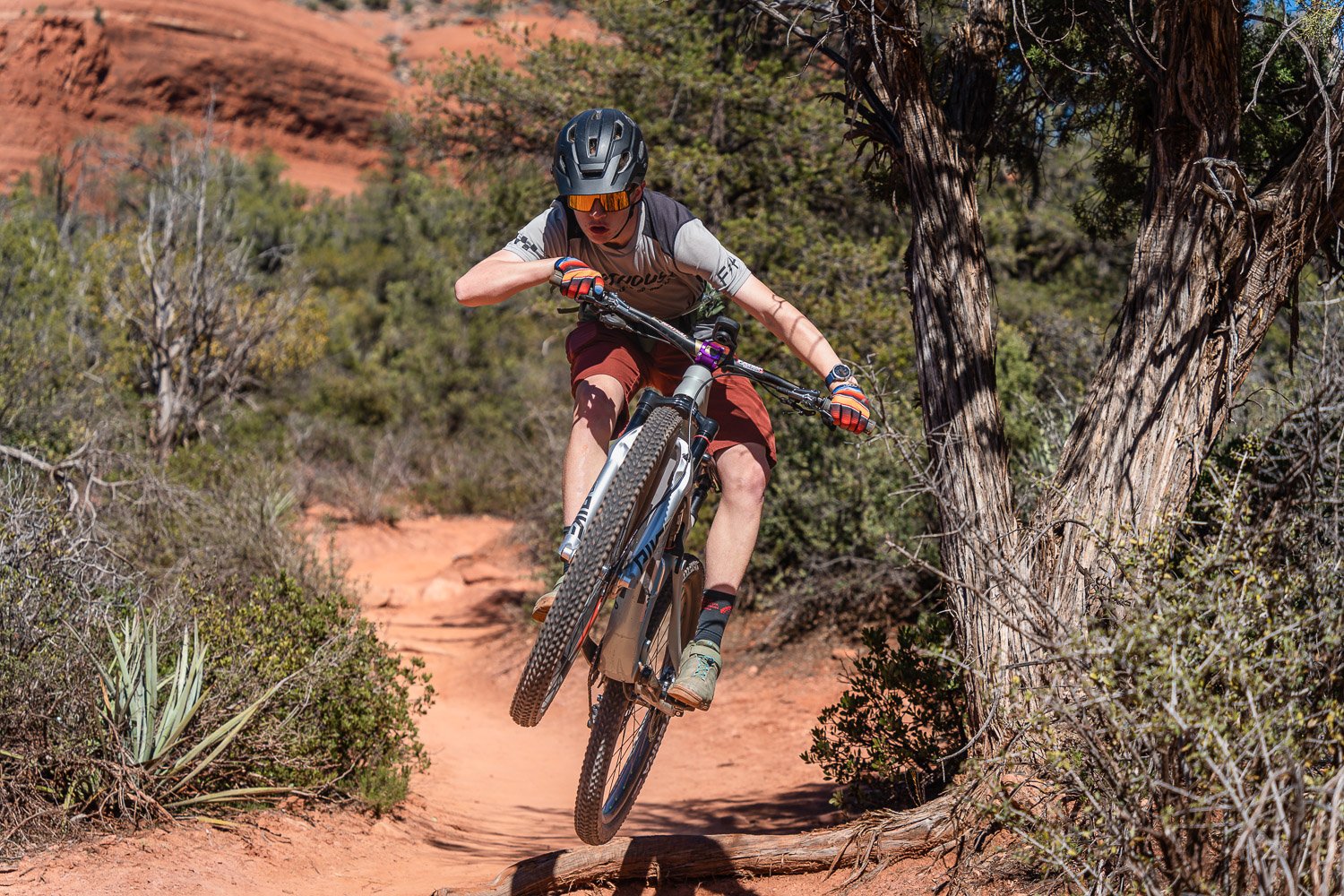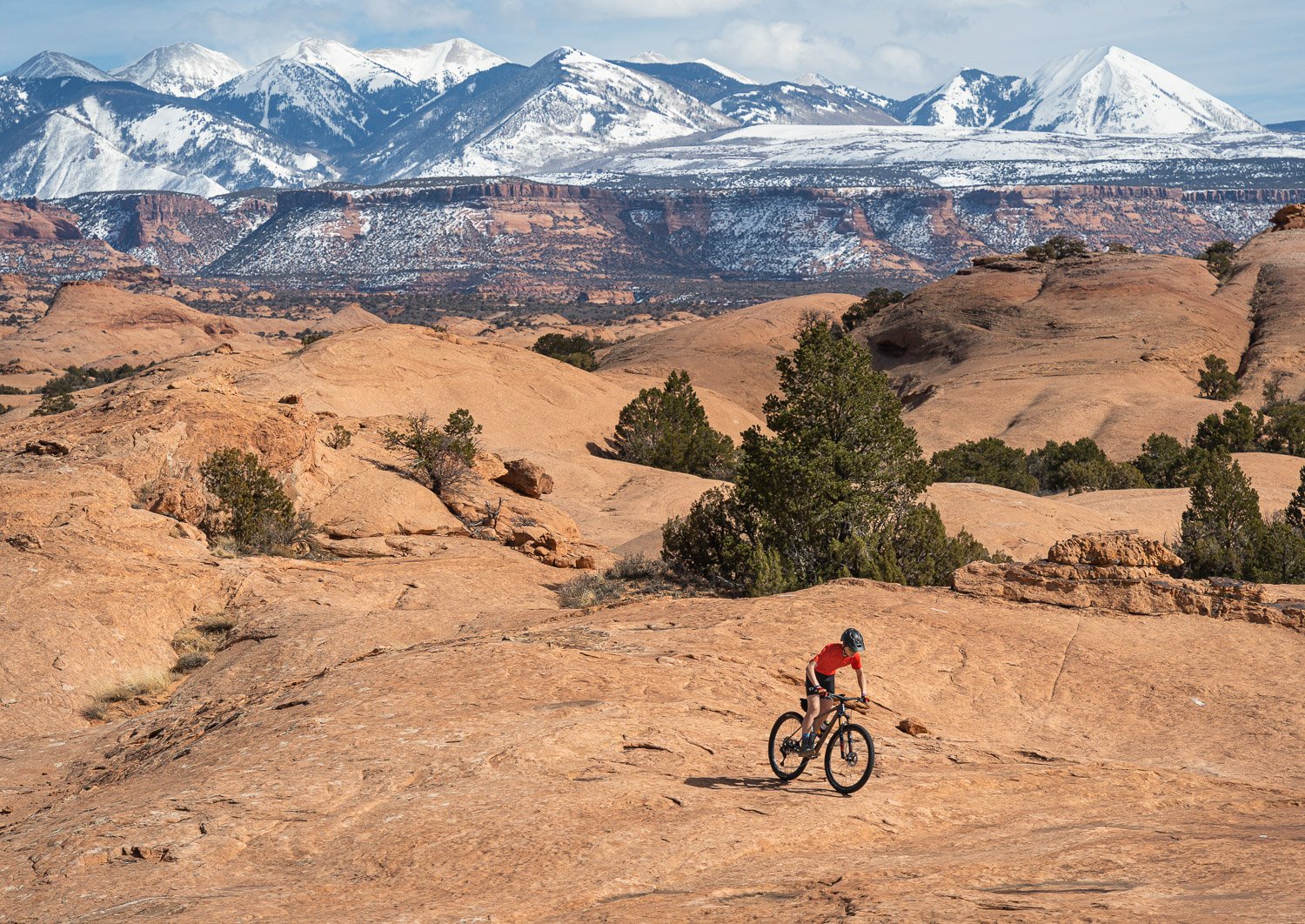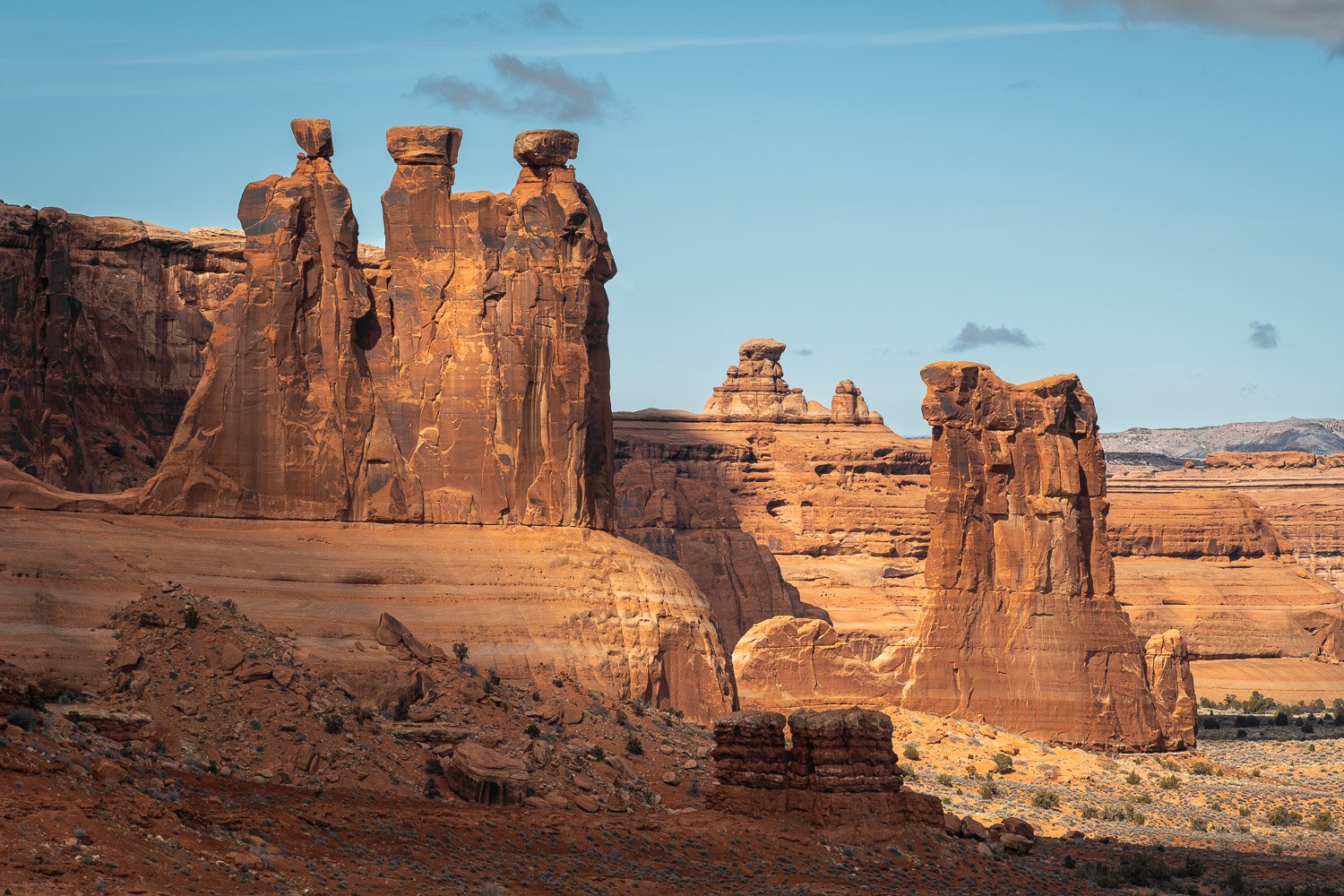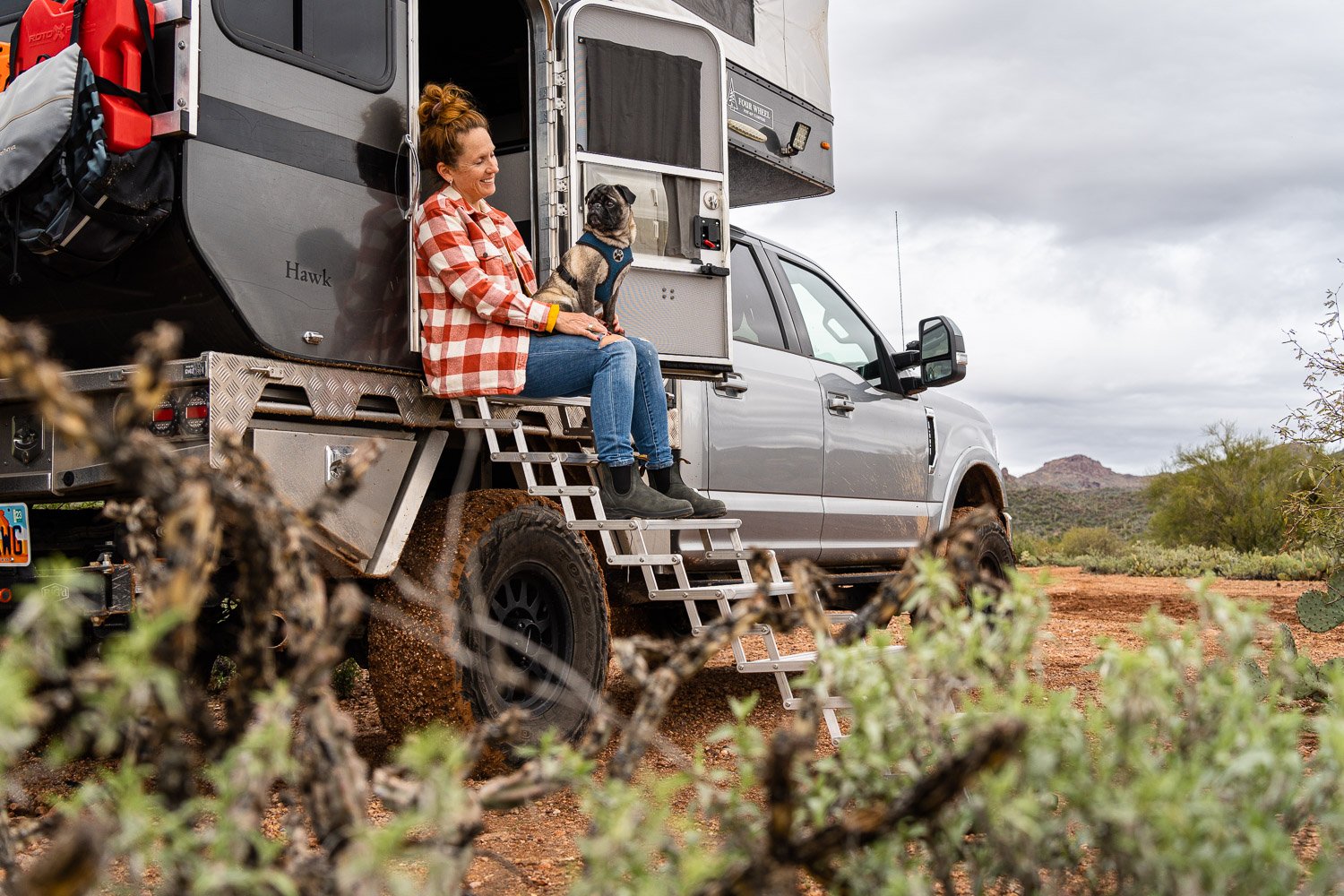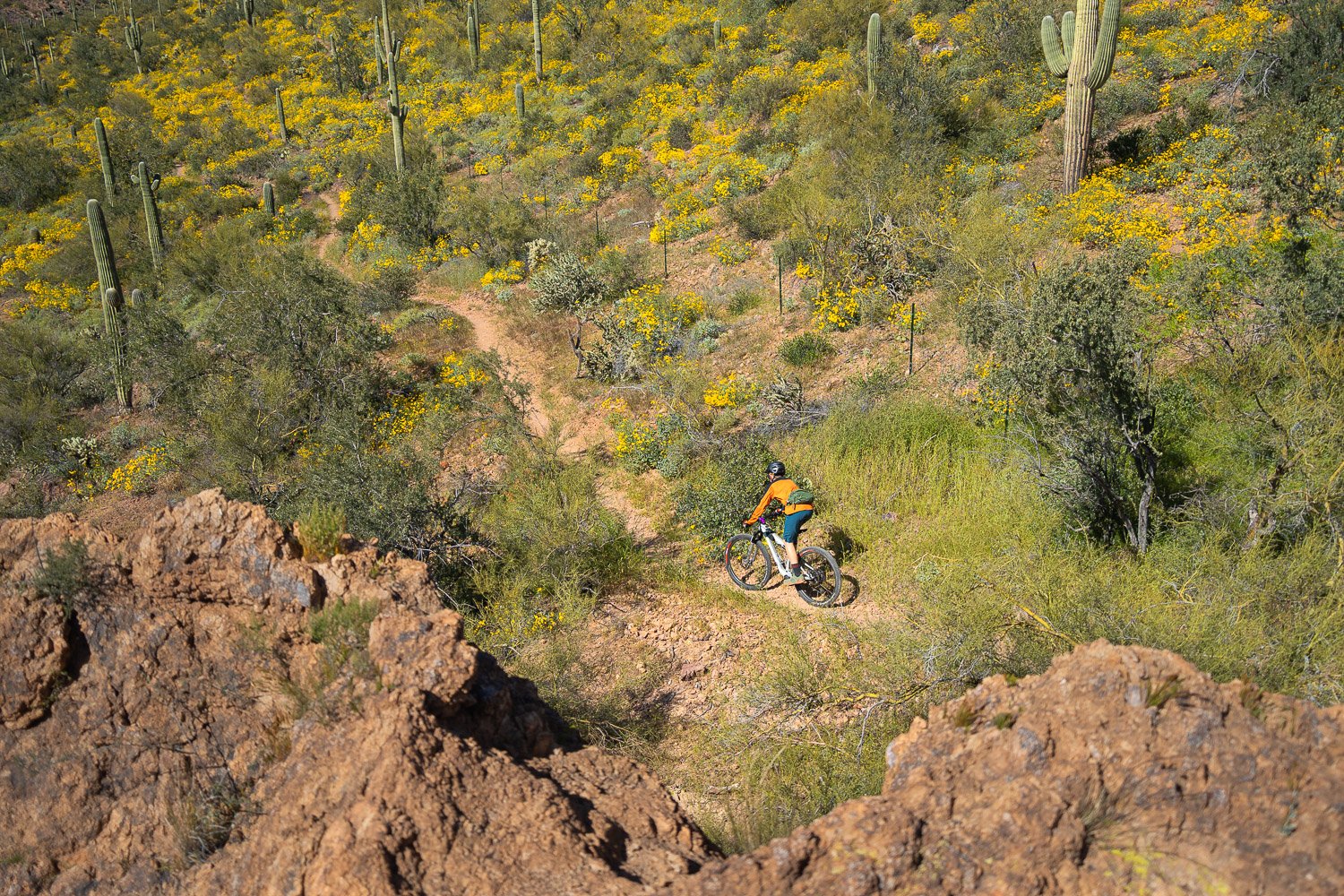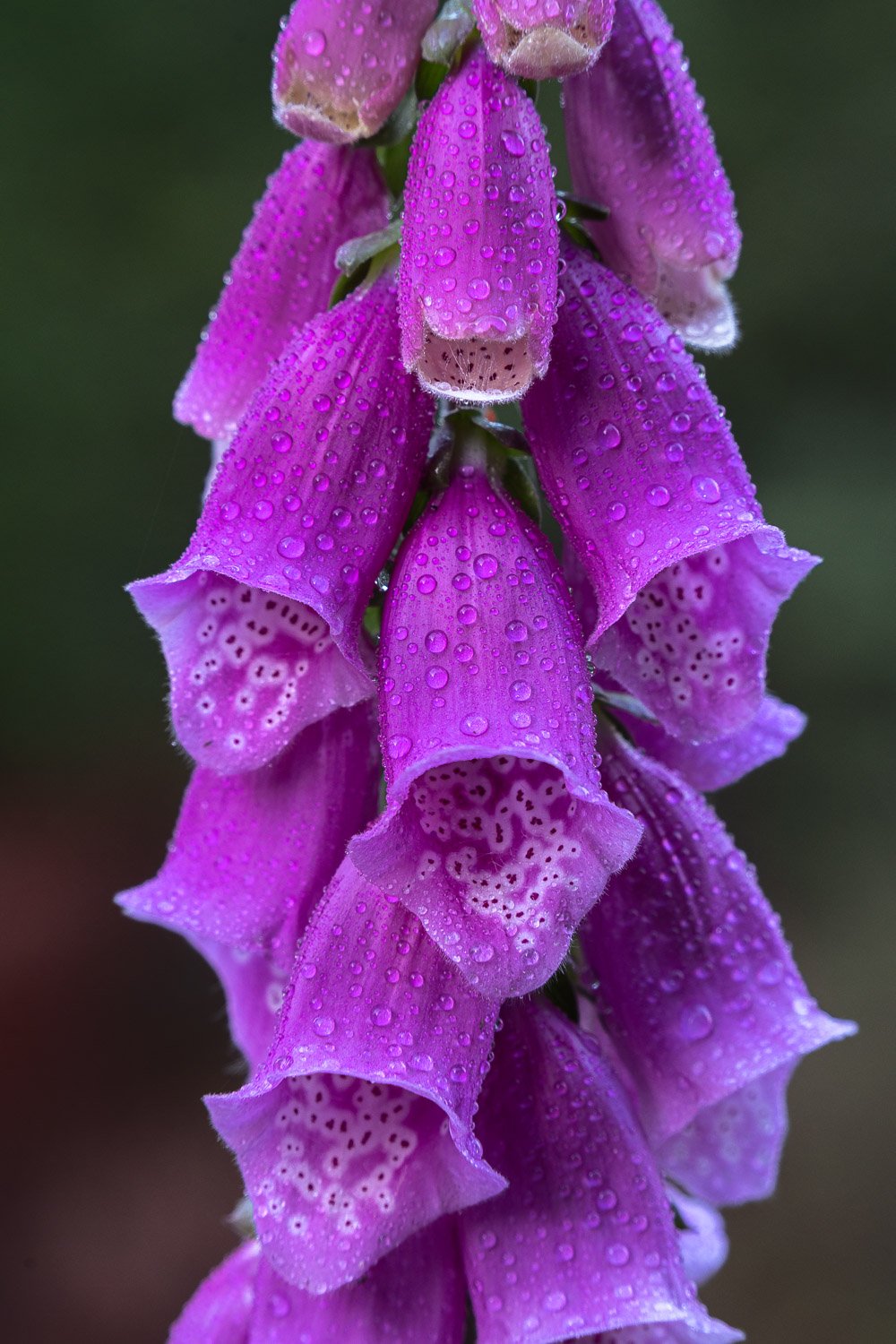Gear Review: Tamron 28-200mm F/2.8-5.6 Di III RXD Lens
The sun sets on another cold winter day in Moab, its warm light draping sandstone fins below the La Sal Mountains before nightfall in the desert.
I’ll be honest – I didn’t have high expectations when I plunked down $650 for the Tamron 28-200mm f/2.8-5.6 Di III RXD lens for use on my Sony A7IV. I just needed a relatively compact, affordable lens with a wide range of focal lengths that would be easy to travel with on commercial flights. There weren’t many lenses in the running and I settled on the Tamron because it was readily available and within my budget. I bought mine where I buy almost all of my camera gear, from the fantastic team at Pictureline in Salt Lake City. Not long ago, superzoom lenses were an exercise in compromise; what you got in versatility you gave up in image quality. For less than $700, and with such a wide zoom range, I was willing to accept this compromise for an easy to pack, “do-it-all” travel lens.
I’ve owned this little powerhouse of a lens for nearly a year and have found myself reaching for it far more often than I’d anticipated. As a professional nature and adventure photographer, I have no shortage of expensive, razor-sharp lenses in my backpack. The Tamron is quickly becoming one of my favorites.
Why is that? Before adding the Tamron lens to my kit, my go-to lens was the popular Sony 24-105mm. It offers a fairly wide zoom range in a relatively compact package with very sharp optics. Though the Tamron isn’t quite as wide (28mm vs 24mm), it has significantly more reach on the long end and I’ve come to discover that it gives up nothing with regard to image quality. Useful zoom range? Check. Sharp images? Check. Relatively compact size in a weather resistant and affordable package? Check. Come on, it can’t be perfect, right? There has to be some type of compromise! Well, there is. A couple of them, actually.
My biggest complaint – and this might be the one that makes the Tamron a no-go for you – is the focusing speed. If you’re strictly a landscape photographer, focusing speed is of little importance and the Tamron’s speed is more than adequate. On the other hand, adventure and wildlife photography often involves fast moving subjects – as in mountain biking – and this lens can be a bit sluggish – especially in low light. That said, I do still use it while riding and have learned to adapt my shooting style and technique to produce high quality action images. Of less concern, at least for me, is that there is no switch on the lens to change between manual and auto-focus. You can still focus manually but you have to use the settings menu on the LCD screen to switch between the focusing modes. It’s a little clunky and inefficient.
Just how sharp is this Tamron lens? That I can’t tell you. I’m not one to set up multiple targets and photograph them all at various focal lengths and apertures so I can scientifically analyze the images in a lab. All of my “data” was gathered in the field, shooting a variety of subjects throughout the lens focal length range, in all kinds of light, over a period of nearly a year. When processing images, I zoom into 100% in Adobe Lightroom and check edge to edge sharpness (on landscapes). This is the admittedly non-scientific way I’ve evaluated the lens and determined that the Tamron 28-200mm lens produces images that are sharp, with accurate colors and good contrast. Perhaps what has surprised me most is just how sharp images are when photographed at the extreme telephoto end of the lens, i.e. 200mm, which is where most superzooms fail miserably. Bravo, Tamron. Bravo!
Build quality is very good, although you won’t mistake it for a “pro” level lens. Tamron uses plastic to keep weight and cost down, potentially at the expense of durability and aesthetics. The lens is weather-resistant and I’ve used it in light rain and snow several times with no ill effects. Only time will tell if long-term durability is an issue.
The Tamron ships with a reversible hood, front and rear lens caps, and a (chintzy) protective bag. It is designed for use on Sony E-Mount full-frame cameras but can also be used on Sony cameras with an APS sensor, though you’ll need to consider how the crop factor impacts the focal length range. For example, a sensor with a 1.5X crop sensor provides an equivalent focal length range of 42mm – 300mm.
Bottom line? The Tamron 28-200 f2.8-5.6 Di III RXD is a versatile lens with outstanding optics at a fair price. It has become a valuable addition to my kit and I believe most travel, nature and landscape photographers who give this lens a shot will feel the same.
